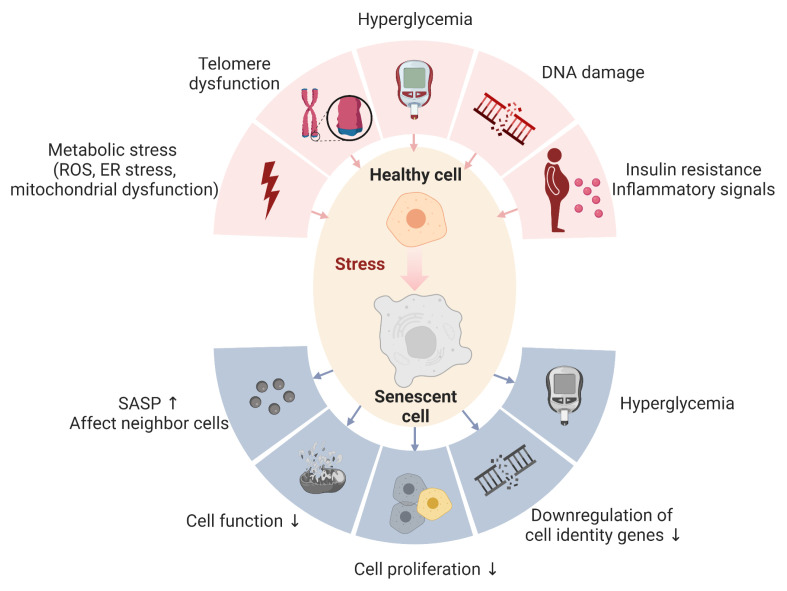Fig. 1.
Role of cellular senescence in type 2 diabetes mellitus. The upper part of the figure depicts factors known to lead to senescence in cells: mitochondrial dysfunction, endoplasmic reticulum (ER) stress, and increased production of reactive oxygen species (ROS). Additional factors include telomere dysfunction or shortening, DNA damage, hyperglycemia, insulin resistance, and inflammatory signals. The lower part of the picture reflects some of the reported negative effects of cellular senescence: secretion of the senescence-associated secretory phenotype (SASP), which can promote the entry to senescence of neighboring cells and their dysfunction. The proliferation of cells is suppressed and they downregulate hallmark identity genes. Due to these characteristics, senescent cells can promote diabetes and metabolic diseases in multiple ways. Created in BioRender.

